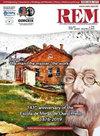Technical and operational aspects of tunnel rounds in artisanal underground mining
Q3 Earth and Planetary Sciences
引用次数: 7
Abstract
In the world today, due to the current high price of gold, thousands of artisanal small-scale mines operate without the financial or technical capacity to upgrade their production methods, often using equipment and working methods that were forsaken decades ago in the conventional mining industry. This article illustrates, with a practical example, that it is possible to achieve the modern requirements of quality, safety and productivity, while operating with mining equipment that basically possesses the same characteristics as that employed in the 1950s. The operation involved the excavation of a 6 meter long tunnel and over 25 stoping sections in both rock and concrete by drilling and blasting in an underground gold mine. The article describes how the main operational problems were overcome. An effective drilling pattern was designed in order to be easily achievable with the limited local equipment. The behavior of the local nitrate explosive was effectively predicted and managed. The interaction with the drilling teams was managed in order to determine a meeting point between their traditional working methods and the scientific view of the engineer. At the end of the article some general guidelines are proposed for the management of similar situations, in order to improve the efficiency, productivity and safety of drill and blast operations in small-scale mines.手工地下采矿巷道掘进的技术和操作问题
在今天的世界上,由于目前黄金的高价格,成千上万的手工小型矿山没有资金或技术能力来升级其生产方法,往往使用几十年前在传统采矿业中被抛弃的设备和工作方法。本文以一个实际例子说明,在使用与1950年代所使用的采矿设备基本具有相同特征的情况下,有可能达到质量、安全和生产力的现代要求。该作业包括在地下金矿中通过钻孔和爆破在岩石和混凝土中开挖一条6米长的隧道和超过25个回采段。本文描述了如何克服主要的操作问题。设计了一种有效的钻井模式,以便在有限的当地设备下轻松实现。对局部硝态炸药的行为进行了有效的预测和管理。为了确定传统工作方法与工程师的科学观点之间的交汇点,与钻井团队的互动得到了管理。文章最后对类似情况的管理提出了一般性的指导意见,以提高小型矿山钻爆作业的效率、生产率和安全性。
本文章由计算机程序翻译,如有差异,请以英文原文为准。
求助全文
约1分钟内获得全文
求助全文
来源期刊

Rem-Revista Escola De Minas
工程技术-工程:土木
自引率
0.00%
发文量
0
审稿时长
6-12 weeks
期刊介绍:
REM – International Engineering Journal (antigua REM – Revista Escola de Minas) es la primera revista técnica de Sudamérica. Fue fundada en enero de 1936 por los estudiantes de la Escuela de Minas de Ouro Preto y desde entonces se ha especializado en la publicación de artículos en las áreas de la Ingeniería Civil, Geología, Metalurgia y Materiales y, Minería y Mecánica y Energía.
Su objetivo es servir como un medio de publicación para los trabajos técnicos y científicos originales de investigadores nacionales y extranjeros en esas áreas. Contribuciones originales (artículos y cartas) son aceptadas. Artículos de revisión dependen de la invitación y/o análisis de los Editores.
El envío de artículos para su publicación implica que el trabajo no ha sido publicado previamente, que no está siendo presentado para su publicación en otra revista y no se publicará en otro lugar, en la misma forma, sin el permiso, por escrito, de los Editores/Autores.
 求助内容:
求助内容: 应助结果提醒方式:
应助结果提醒方式:


